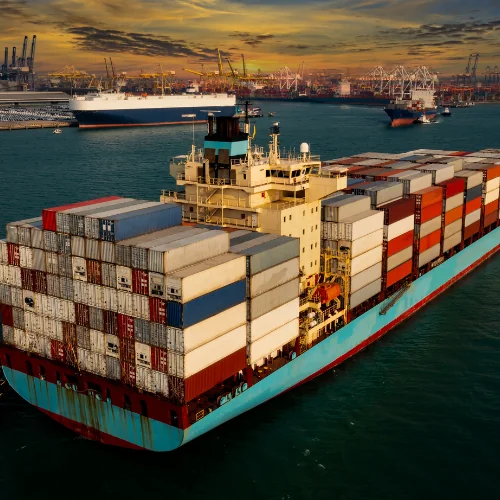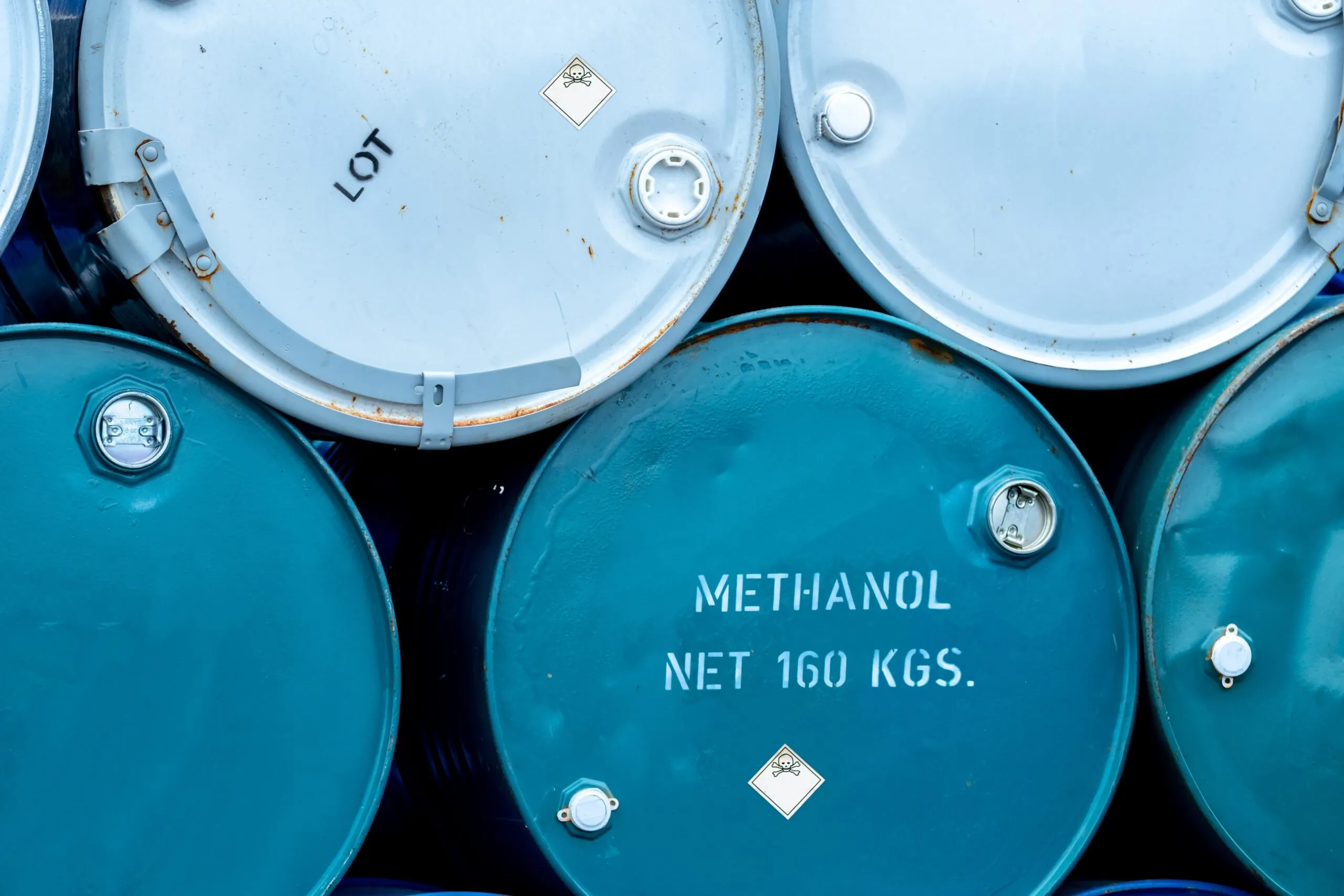
Maersk Methanol Mega-Ships
The Ane Maersk is the world’s first large container ship powered by methanol and can carry up to 16,000 containers. It was named after Ane Maersk Mc-Kinney Uggla, who has played an important role in the Maersk Group. The ship’s design is unique, as it has a forward bridge and accommodation, which allows for more containers and improves port efficiency. It was christened during a naming ceremony in South Korea.
Maersk has recently ordered a set of 25 container ships that will be powered by methanol. The first ship in the series is the largest methanol-powered cargo ship, measuring 172 meters in length. This new ship is a big step towards decreasing greenhouse gas emissions in the shipping industry. The ship can run on both methanol and traditional fuels, which gives it flexibility in choosing fuel sources. Using green methanol as a fuel helps reduce CO2 emissions significantly compared to traditional fuels. Maersk’s goal is to have 25% of their ocean cargo ships powered by green fuels by the end of the decade. This shows their commitment to sustainable shipping practices.
What is Methanol?
Methanol is a type of alcohol that is also called methyl alcohol or wood alcohol. Its chemical formula is CH3OH. It is a clear liquid that gives off a slightly sweet smell. Methanol is used in many different ways, such as a solvent, antifreeze, fuel, and to make other chemicals. It is also used to make formaldehyde. However, it is essential to know that methanol is very dangerous for people if they swallow it, breathe it in, or get it on their skin. It can cause serious health problems or even death.
Methanol has many advantages over traditional fossil fuels, including sustainability, a positive environmental impact, energy security, and versatility. However, obstacles such as infrastructure development, technological innovation, and policy support may need to be tackled to unlock its full potential.

What Are the Benefits of Methanol?
– Reduced greenhouse gas emissions: Methanol can be derived from renewable sources like biomass or carbon dioxide captured from the atmosphere. This presents a promising avenue for reducing overall carbon emissions compared to conventional fossil fuels.
– Improved air quality: When burned, methanol produces fewer harmful pollutants, such as sulfur oxides, particulate matter, and nitrogen oxides, than traditional gasoline or diesel fuels.
– Compatibility with existing infrastructure: Methanol can be blended with gasoline in various proportions, allowing for relatively easy integration into existing transportation infrastructure.
– Energy security: The creation of methanol can help to vary how we get energy, lessening our dependence on specific regions for oil and gas supplies. This can strengthen our energy safety and lower the risks of depending on fuels we import from other countries.
– Lower cost: Methanol production costs can be competitive with or even lower than conventional fossil fuels, especially from low-cost feedstocks or renewable sources.

Who Are the Suppliers of Green Methanol for Maersk?
As one of the largest container shipping lines in the world, the Danish company Maersk has been actively investigating different sustainable fuels and technologies, including green methanol, to curb emissions from its fleet. Maersk uses methanol as a fuel for its vessels. The company invested in “green methanol” to reduce carbon dioxide emissions and work towards carbon neutrality. The ships have dual-fuel engines that run on methanol and traditional low-sulfur fuel. They even secured a “green” e-methanol supply for use in their container vessels to reduce environmental impact.
Maersk has made partnerships with several other companies to ensure they have a reliable supply of green methanol for their ships. The suppliers for green methanol for Maersk include CIMC ENRIC, European Energy, Green Technology Bank, Orsted, Proman, WasteFuel, REintegrate (a subsidiary of European Energy), Carbon Sink LLC, and Goldwind. By working together, Maersk hopes to increase the global production of green methanol used to power their container ships. The partnerships involve initiatives such as building production facilities and using carbon-neutral e-methanol and renewable energy to produce methanol. These partnerships are important in making more green methanol available and supporting Maersk’s use of environmentally friendly energy sources.

Challenges of Using Green Methanol
1-Limited Production and Supply: The production and availability of eco-friendly methanol are inadequate. The industry is still in the initial stages of increasing production, and it must be expanded to satisfy the demand for ships powered by methanol.
2-Sourcing and Availability: Sourcing green methanol is a significant challenge. The availability of green methanol is not yet sufficient to meet the demand for methanol-powered vessels. Maersk is actively working on securing a reliable supply of green methanol through partnerships and agreements with suppliers.
3-Cost and Economics: Green methanol currently costs more than conventional fuels, which can pose an economic challenge for Maersk and other shipping companies. The cost competitiveness of green methanol needs to improve to encourage wider adoption.
4-Technological Advancements: Continued technological advancements are necessary to increase the production capacity of green methanol and improve the efficiency of the production process. Research and development efforts are ongoing to address these technological challenges.
5-Transition and Infrastructure: Moving towards green methanol as a fuel source requires the development of infrastructure, such as production facilities and supply chain logistics. However, building this infrastructure and ensuring its availability can be challenging for Maersk and the industry.
The Future of Green Methanol:
Green methanol is becoming more popular as a sustainable alternative to regular methanol, especially in the marine fuel sector, as people try to reduce carbon emissions. By 2050, green methanol is expected to play a big role in decreasing the carbon output of the shipping industry. It can reduce carbon dioxide emissions by up to 95%, making it a popular choice for various industries. The development of technology and government support is expected to increase the production of green methanol, making it more available. However, challenges remain, such as limited production and supply, finding sources of green methanol, cost competitiveness, and developing infrastructure. With more investment, technological advancements, and policies to support it, green methanol has the potential to be a significant player in the energy transition across industries.


